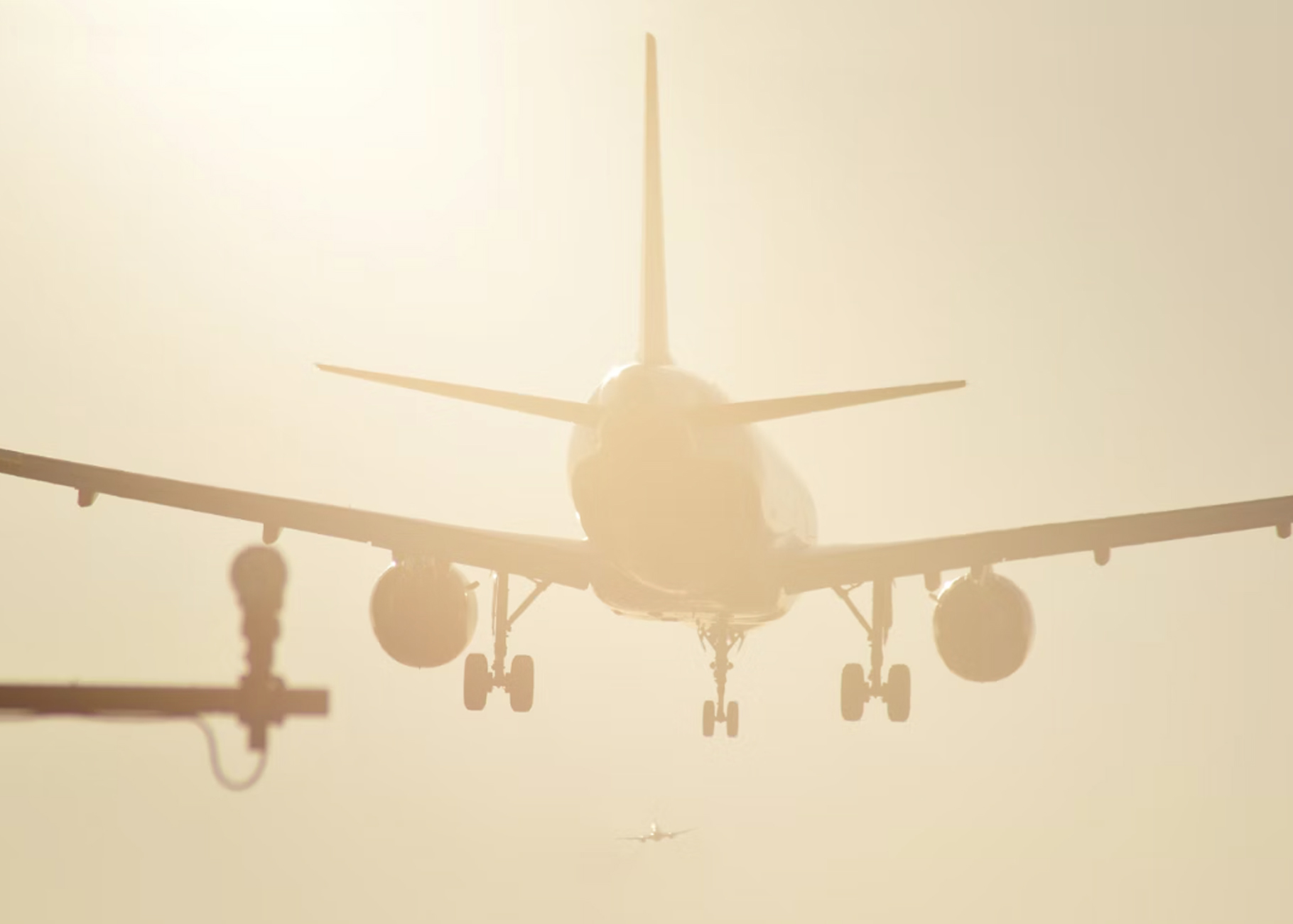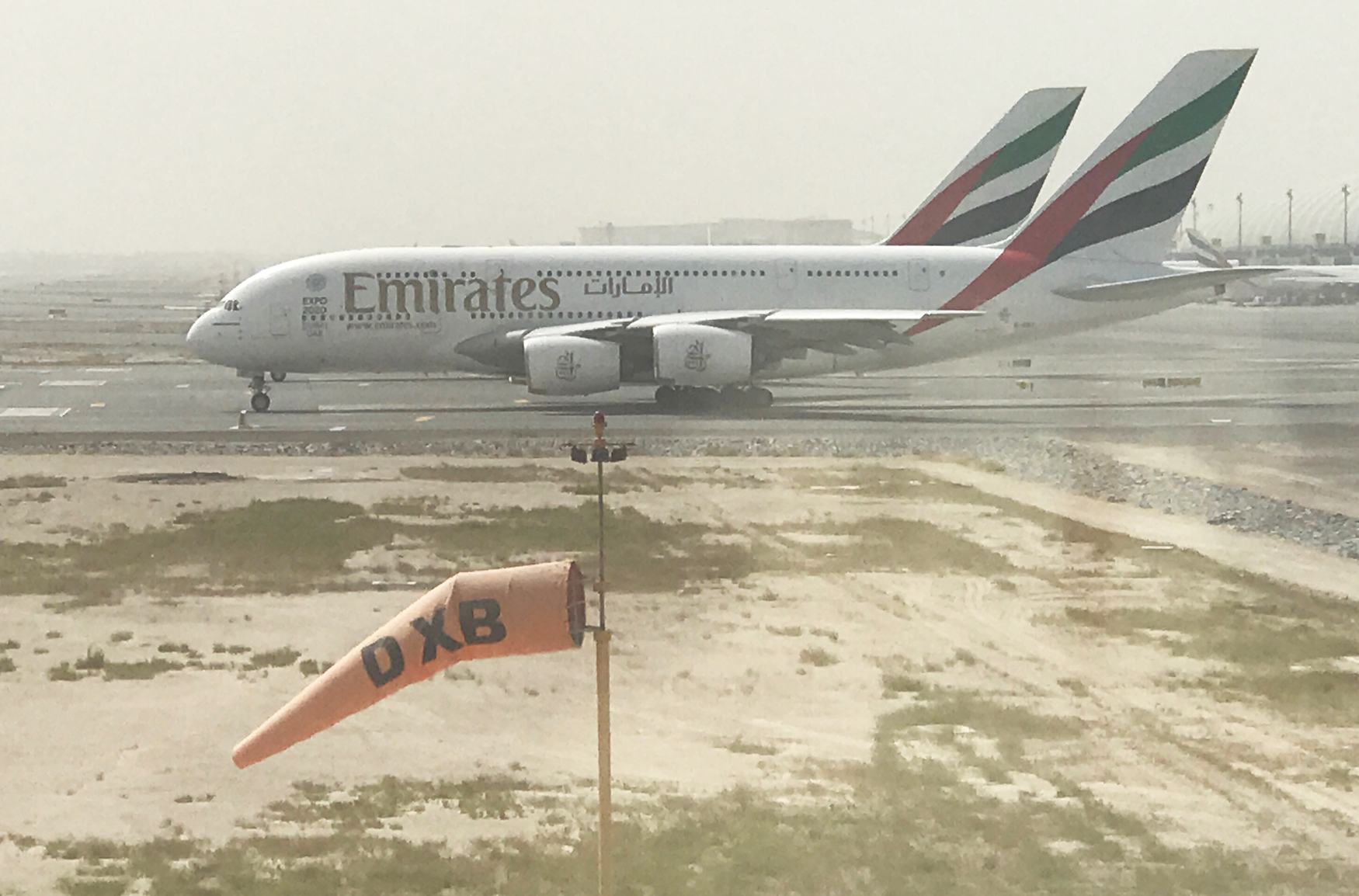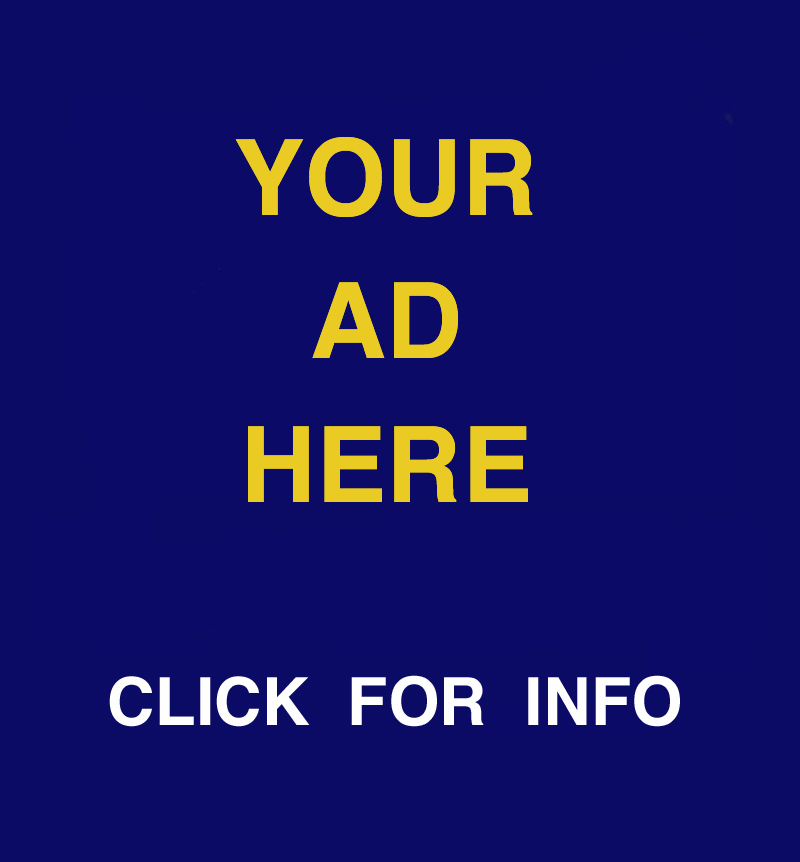Feeling the Heat
August 5, 2024
“Meltdown” is the buzzword used when computer glitches throw air travel into disarray, as happened a couple of weeks ago. But is there a more literal application? How do extreme temperatures impact air travel? The question is important, as heat waves pummel the globe and we keep breaking records for the hottest-ever temperatures.
On the most basic level, hot weather affects air travel the way it affects most things: it makes people uncomfortable and wears them down. Things happen more slowly. With all that nonreflective asphalt and open space, airports become “heat islands,” subjecting people and equipment to sometimes unbearable conditions. Imagine what it’s like slinging suitcases out on the tarmac when the mercury hits triple digits.
Workers are subject to overheating, and so is their equipment: tugs, tractors, cart and lifts — all the myriad moving parts of airport logistics. Airplanes themselves, meanwhile, have a lot of internal machinery, both electronic and mechanical, and much of it runs hot to begin with. Throw in soaring temps and things can break down.
Aerodynamically, warmer air is less dense than cooler air, meaning that in hot weather a wing produces less lift. Jet engines don’t like this low-density air either, producing less thrust. Engines also are subject to internal temperature limits — exhaust gas temps, etc. — beyond which operation isn’t permitted. Together, this dictates higher takeoff and landing speeds — which, in turn, increases the amount of required runway.

What all of that means for travelers is that your flight might be weight-restricted and unable to take a full load of people or cargo. How much so will vary with the temperature and runway length.
Outright grounding of flights is rare, but at a certain point that can happen too. Some aircraft have a hard temperature limit — usually around 50 degrees Celsius — beyond which taking off simply isn’t permitted. We also get a detailed paper printout before each departure that factors in weight, temperature, wind, runway length, and so forth, providing us with the speeds, thrust, and flap settings that we’ll use for takeoff. Sometimes, above certain temperatures, data doesn’t exist.
So, you could say there are hard and soft limits. The aerodynamic limits are soft. That is, you don’t know for sure if a flight can safely depart, or at what weight, until you juggle the numbers. The hard limits are the absolute temperature maximums, set by the manufacturer, that you’re not allowed to exceed.
If your flight is weight-restricted — or canceled — you’re liable to get a dumbed-down synopsis over the gateside loudspeaker or from your pilots. Something along the lines of, “We’re sorry but it’s too hot to fly today.” This makes it sound subjective, or up to the whims of the crew, but in reality it’s more scientific.
Extreme heat is no fun for airlines or their customers. Unfortunately, you can expect more of it as climate change causes more and more extreme weather events, including extreme heat waves.
It’ll be especially interesting to see the effects on those carriers whose hubs are located in what are already the hottest places on earth. The Gulf Carriers, for example (Qatar, Emirates, and Etihad) or Saudia, or Air India. Fortunately for them, many of their long-haul flights arrive and depart in the dead of night, when it’s cooler.

All well and good, but I’ve failed to address the one question you’re lining up to ask: Why are are planes so damn hot when parked at the gate?
Well, a plane’s air conditioning is supplied one of three ways:
1. Via the engines. Air for the “packs” as the AC units are called (it’s an acronym from the words “pneumatic air cycle kit”), is plumbed from the engine compressors. This is the most effective way of cooling or heating the cabin.
2. However, planes can’t run their engines at the gate. And so, during boarding and deplaning, air is supplied to the packs via the plane’s APU, or auxiliary power unit. This is a small jet engine usually located up under the tail. The APU can power the packs as necessary, but they won’t run as robustly as when the main engines are supplying the air.
3. Via an external air supply. You’ll sometimes see fat, caterpillar-like hoses connected to the belly of a plane. These provide hot or cold air as requested from an air conditioning unit attached to the jet bridge. The effectiveness of this method tends to vary plane to plane and gate to gate.
Variations in 2. and 3., above, are the reason the cabin is sometimes sweltering. Or, in winter, freezing cold.
Related Stories:
TALKING TURBULENCE
THE DEICE MAN COMETH
Landing photo by Victor Forgacs, courtesy of Unsplash.
Emirates photo by the author.




Leave a Comment
Maximum 1500 characters. Watch your spelling and grammar. Poorly written posts will be deleted!
11 Responses to “Feeling the Heat”
You are viewing newest comments first. Click to reverse order
Moc zajímavé. Děkuji za informaci.
Adding to the enjoyment of an overheated cabin is the aroma exuding from the pores of those folks who have a pathological aversion to soap, water and a washcloth. Perhaps the FARs should include a rule requiring that all occupants of an airliner bathe and apply deodorant before boarding. We’ve regulated the hell out of everything else associated with air travel. Might as well get something going with personal hygiene.
And, no, dumping a half-gallon of cologne or perfume on your odoriferous carcass does not count! 🙂
If it gets too hot for most planes – can we bring back the VC-10?
In the 70s when AA first decided to fly 747s into PHX, they started in the winter (peak season for travel there.) When summer rolled around, they canceled all 747 flights because they couldn’t carry a paying load with the runway lengths. That’s also when Terminal 2 got the first Skybridge at Sky Harbor. Gate 2, AA.
I recently heard a podcast about the plight of the plane cleaners. Apparently the airlines don’t want to spend the money to run air-conditioning for a few people (u derstandable), but I think I remember them not being allowed to carry water with them, and their lockers are not nearby. It sounded like OSHA violations.
In addition to the air source feeding the packs, there is the problem of the radiators (or heat exchangers) themselves. Those devices are sized/designed to be efficient when there is air blowing through them at five hundred miles per hour in flight. Yes, there are fans that draw ambient air across the radiators when the airplane is parked, but it’s just not as robust a blast as the stream of air molecules blasting through there in flight. So the output of the pack just doesn’t have the same cooling capacity when the airplane isn’t flying. The best air conditioning I’ve worked on was the EMB-145, which on a humid August day in Houston could actually make it snow out the vents in the cockpit. I guess when you’re an engineer designing a plane in the amazon, you give it good air conditioning.
Good information.
One wonders if the airlines operating out of places like Phoenix have policies like “hey, that’s a midafternoon July departure from Phoenix, let’s cap bookings at 80 or 90%”.
Naaah.
Thanks for the explanation. I would’ve liked to have seen this 20+ years ago when it hit 122 F at Phoenix’s Sky Harbor and they held a bunch of flights until it cooled down. They explained at the time that they didn’t “have data” for the performance above about 120 degrees. Lift, baggage weight, equipment temps, and not to mention the poor guys loading my wife’s bags, each with a “Heavy” sticker, onto the plane. As with everything you do, it makes sense when you explain it.
About 20 years ago on a SCUBA trip from DFW to La Paz BCS, we had to change planes in Mexico City because the baggage overloaded the plane on a hot summer day in early afternoon. We sat at the gate for about 90 minutes while a bunch of it was offloaded, including our dive gear. It was delivered to our hotel around midnight, when it was shipped in on a later, cooler flight.
In 1964 when I was in the 101st Airborne our artillery battalion and the rest of the division were in the Mojave desert on Exercise Desert Strike. An NCO and personal friend had the job of being an air observer in a single engine plane, piloted by someone who had graduated from the Army Aviation School about two weeks before. On takeoff in the high desert, the pilot didn’t notice the runway tilting slightly uphill, and the plane crashed, killing both of them. RIP, Sergeant Delton Teeter.
Yes, agree with Ian — so good to see an acknowledgement of the working conditions on the tarmac! Intense heat kills quickly.
Good to read an acknowledgement of the workers who have to work in such heat, if only in passing. Interesting to reflect on how different countries deal with this problem. Texas recently eliminated the mandated rest breaks for construction workers laboring in intense heat. And while in Japan this past hot June I saw construction workers wearing jackets that incorporated small fans to keep them cool.